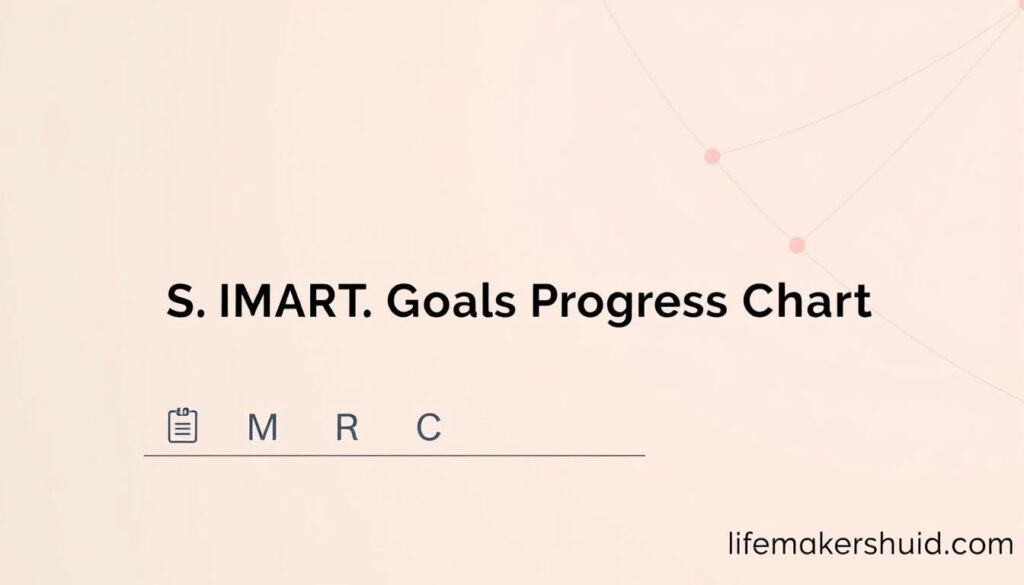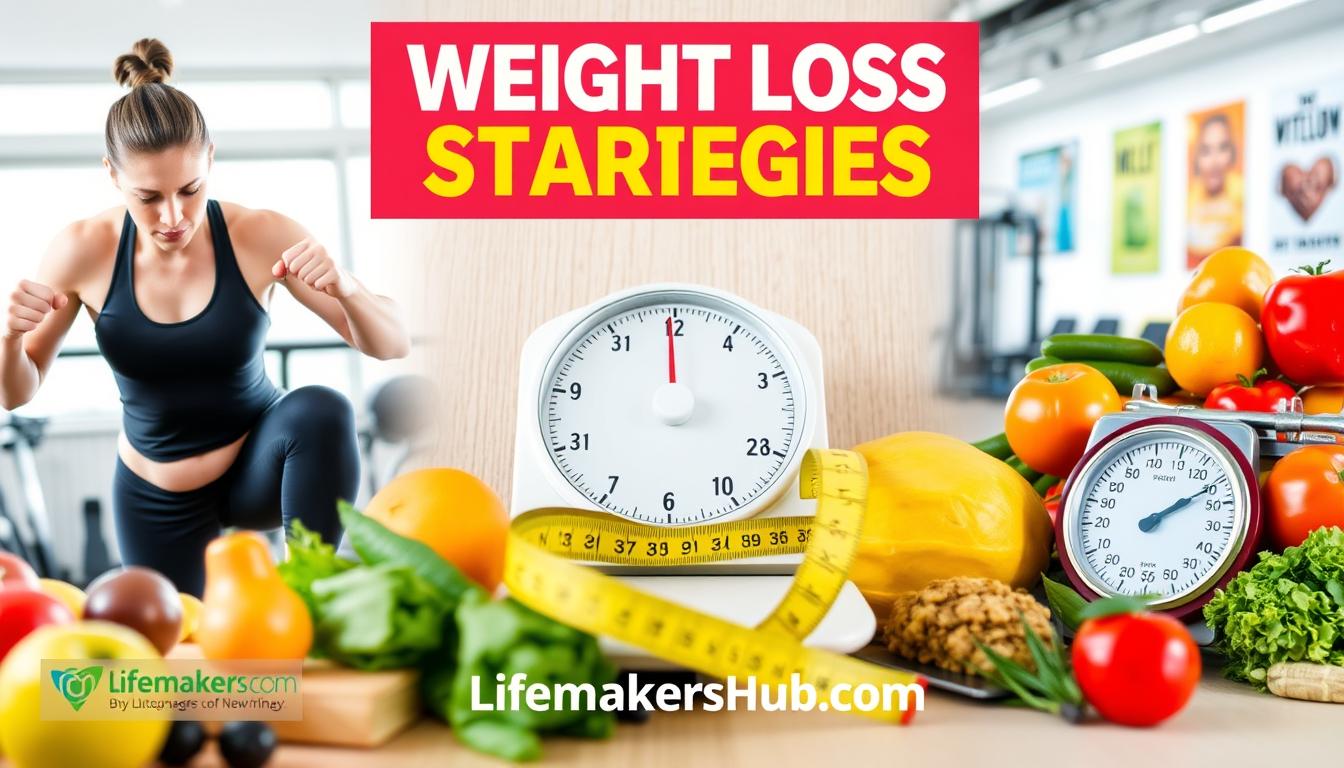Your Guide to Successful Weight Loss Strategies
Successful weight loss isn’t about quick fixes. It’s about making lifestyle changes for weight loss that last. The Mayo Clinic says the best strategies include balanced diets, more movement, and lasting habits. This guide offers science-backed healthy weight loss tips for lasting results.
Starting small is key. Aim to lose 1–2 pounds a week. This means burning 500–750 more calories than you eat each day. Losing just 5% of your weight can lower heart disease and diabetes risks. For example, someone who weighs 180 pounds can improve health by losing 9 pounds.
Effective weight loss strategies combine diet, exercise, and mindful eating. This is the foundation for success.
Long-term success comes from tracking your progress. Keep a log of meals and workouts. Focus on eating nutrient-rich foods like veggies and fruits. Exercise is also crucial: 30 minutes of aerobic activity most days, plus strength training twice a week, builds muscle and boosts metabolism.
The National Weight Control Registry shows that keeping weight off requires consistent habits. This guide will help you with practical steps, from setting goals to overcoming challenges. You’ll get the tools you need for a healthier journey.
Key Takeaways
- Aim for 1–2 lbs weekly loss through calorie deficit and exercise.
- Losing 5% of body weight can lower risks of chronic diseases.
- Combine diet, exercise, and mindful eating for lasting results.
- Track progress via journals or apps to stay accountable.
- Successful maintainers prioritize regular physical activity and healthy eating.
Understanding Weight Loss: The Basics
Weight loss starts with knowing how your body uses energy. It’s about understanding how fat, calories, and hormones work together. This knowledge helps you achieve lasting results.
What Happens When You Lose Weight?
When you lose weight, your body turns stored fat into energy. This process is called lipolysis. It affects hormones like leptin and ghrelin, which control hunger and fullness.
A calorie deficit is key to losing weight. This means burning more calories than you eat. But losing weight too fast can slow down your metabolism. So, losing 1–2 pounds a week is often better for keeping weight off.
The Importance of a Healthy Diet
Eating right is crucial for losing weight naturally. Focus on foods high in protein like chicken or black beans. They help keep your muscles strong.
Fiber in veggies and whole grains also helps you feel full. For example, oats are a great source of fiber.
| Food Source | Protein (g per 100g) |
|---|---|
| Skinless Chicken Breast | 23.2 |
| Black Beans | 21.6 |
| Lentils | 9.02 |
| Lean Ground Beef | 20.8 |
Combine these with veggies like Brussels sprouts and healthy fats like avocados. Make sure to follow guidelines for protein and veggies based on your age. Adults should aim for 5–7 oz of protein and 2–5 cups of veggies daily.
Popular Diet Plans for Weight Loss
Choosing the right diet can change your weight loss journey. Good diet plans mix science with easy-to-follow steps. The Mayo Clinic suggests eating fresh foods and being mindful to build lasting habits.
“It’s a good idea to be mindful while you eat. Focus on eating fresh foods. They have more nutrition than processed foods.”
Ketogenic Diet: High Fat, Low Carb
This diet makes your body burn fat for energy. It has a few key rules:
- Keep carbs under 50 grams a day
- Eat healthy fats like avocados and nuts
- Watch your protein to avoid too much
It leads to quick weight loss at first. But, it can make you crave carbs. Studies say very low-carb diets limit carbs to less than 10% of calories.
Mediterranean Diet: Healthy Fats and Whole Foods
This diet is based on Mediterranean food. It focuses on:
- Eating vegetables, fruits, whole grains, and lean proteins
- Using healthy fats like olive oil and nuts
- Reducing processed foods and sugars
Research shows it helps keep weight off for a year. It also lowers heart disease risk and can help you live longer.
Intermittent Fasting: Timing Your Meals
This diet changes when you eat to match your hunger. Popular ways include:
- 16:8 Method: Eat for 8 hours
- 5:2 Diet: Eat 500–600 calories two days a week
Studies show it can lead to 0.8–13% weight loss. It works by controlling hunger hormones.
| Diet Plan Comparison | |
|---|---|
| Key Features | High fat (Keto), whole foods (Mediterranean), meal timing (Intermittent) |
| Weight Loss Effectiveness | Quick initial (Keto), 12-month maintenance (Mediterranean), moderate steady loss (Intermittent) |
| Health Benefits | Metabolic shifts (Keto), chronic disease prevention (Mediterranean), insulin sensitivity improvement (Intermittent) |
Effective weight loss plans often mix these diets with exercise. Talk to a doctor to find the best fit for you. Success comes from matching your diet to your lifestyle and health goals.
Exercise: Key to Sustainable Weight Loss
Physical activity is more than just a bonus—it’s a key part of losing weight. The CDC says you should do at least 150 minutes of moderate exercise each week. This mix of cardio and strength training helps boost your metabolism and keeps you on track.
Over 90% of people who keep weight off do it by staying active. They know that exercise is crucial for long-term success.
Cardiovascular Activities for Burning Calories
- Walking, jogging, or cycling burns 6–10 calories per minute, depending on intensity and body weight.
- HIIT workouts can increase calorie burn by 25–30% compared to steady-state cardio.
- Swimming or rowing engages large muscle groups, burning 9–12 calories per minute.
Strength Training for Building Muscle
Doing exercises like squats or lunges helps your body burn more calories even when you’re not moving. A study found that strength training can raise your metabolic rate by up to 7.4%. This means you could burn an extra 125 calories every day.
Try to do strength training 2 times a week. Use free weights, machines, or bodyweight exercises.
Creating Your Routine
Combine 30–60 minutes of cardio 3–5 times a week with 2 strength sessions. For example:
- Start with brisk walks or yoga if you’re new to exercise.
- Increase the intensity slowly to avoid injury.
- Choose activities you enjoy to stay consistent.
Even small changes, like taking the stairs or biking to work, can help. Make sure your exercise routines for weight loss fit your lifestyle to avoid getting tired of them.
Setting Realistic Weight Loss Goals

Healthy weight loss tips often overlook the importance of goal-setting. To achieve sustainable weight loss methods, start by defining goals using the SMART framework: Specific, Measurable, Achievable, Relevant, and Time-bound. For example, “Lose 10 pounds in three months” is clearer than vague aims like “get thinner.”
- Specific: Target a number (e.g., 8–12 pounds) and timeframe.
- Measurable: Track progress via weekly weigh-ins or fitness apps.
- Achievable: Aim for 1–2 pounds weekly, as recommended by the CDC.
- Relevant: Link goals to health outcomes, like lowering blood pressure.
- Time-bound: Set deadlines, like losing 5% of body weight in three months.
Tracking progress goes beyond the scale. Note changes in energy levels, clothing fit, and health markers like blood sugar. Studies show those who log daily steps or meals lose 65% more weight over a year. Use apps like MyFitnessPal or journals to record milestones. If progress stalls, adjust goals gradually—never skip meals or crash diet.
Behavioral goals matter too. Pair weight targets with actions like “walk 30 minutes daily” or “cook at home thrice weekly.” The American Diabetes Association highlights that small, consistent steps build habits that last. Remember: losing even 5–10% of initial weight reduces disease risks, so celebrate small wins to stay motivated.
Nutritional Strategies to Support Weight Loss
Effective natural weight loss solutions begin with knowing how food powers your body. A balanced diet full of nutrients and mindful eating are key to lasting healthy weight loss tips. Focus on quality food, not just how much, to lose weight without feeling deprived.
Understanding Macronutrients
- Proteins: Choose lean meats, legumes, or plant-based foods. They help keep muscles strong and keep you full.
- Carbohydrates: Go for complex carbs like whole grains and veggies. They give you steady energy without causing blood sugar highs.
- Fats: Pick unsaturated fats from avocados or nuts. They boost metabolism but eat them in small amounts because they’re high in calories.
Portion Control: Eating Less Without Hunger
Here are ways to manage your portions well:
- Use smaller plates to make portions look smaller.
- Pre-portion snacks to avoid eating too much.
- Eat high-fiber, water-rich foods like soups or veggies. They help you feel full without many calories.
“To lose weight, you need to lower the total calories you take in from food and drinks.” – Mayo Clinic
Combine these tips with mindful eating: enjoy each bite and pause between meals. Small, steady changes in what you eat and how much can lead to lasting results. Focus on whole foods and listen to your body’s hunger signals for a healthier, long-term weight loss plan.
The Role of Hydration in Weight Loss
Hydration is more than just drinking water. It’s a key part of natural weight loss solutions. Every part of our body needs water to work right. Even a little dehydration can slow down how we burn fat.
Drinking water before meals can help you eat fewer calories. It can also make your metabolism work better. Here’s how you can use water to your advantage.
Why Drinking Water Matters
Water helps with proven weight management techniques by speeding up fat burning. When we’re dehydrated, our body can’t break down fat for energy. This is called lipolysis.
Studies show that even a little dehydration can make it harder to lose weight. Drink half your body weight in ounces of water each day. For example, a 150-pound person should drink about 75 ounces.
“The natural sugar in fruit is OK, but limit sugary drinks,” advises the Mayo Clinic.
Hydrating Alternatives to Sugary Beverages
Switching from soda to better choices can help you cut calories. Sugary drinks have lots of empty calories. For example, one 20-ounce soda has 240 calories, while sparkling water has none.
Here’s how to make the switch:
- Infuse water with lemon, cucumber, or berries for flavor
- Try herbal teas like green tea (contains metabolism-boosting antioxidants)
- Replace juice with a piece of fruit (e.g., an orange vs. orange juice cuts calories by 50%)
| Sugary Drinks | Healthier Options |
|---|---|
| 12 oz soda: 150 calories | Sparkling water: 0 calories |
| Flavored latte: 300 calories | Black coffee + cinnamon: 5 calories |
| Energy drink: 110 calories | Electrolyte tablets + water: 0 calories |
Drink water 30 minutes before meals to feel full. Every sip brings you closer to your weight loss goals.
Mindful Eating: A Game Changer
Mindful eating is changing how we lose weight. It makes us focus on the moment while eating. The Mayo Clinic says it helps us know when we’re full and avoid eating too much. It can cut calorie intake by up to 40% if done regularly.
Understanding Emotional Eating
Emotional eating happens when we’re stressed, bored, or happy. It makes us want to eat even when we’re not hungry. Studies show mindful eating can help control these urges.
- Pause before eating: Ask, “Am I hungry, or seeking comfort?”
- Keep a food journal to track emotional triggers
- Replace eating with activities like walking or deep breathing
People who eat mindfully eat 30% less out of emotion. They also enjoy their meals more with smaller portions.
Techniques for Practicing Mindfulness During Meals
Here are steps to add to your weight loss plan:
- Pre-meal pause: Rate hunger on a 1-10 scale before eating
- Chew thoroughly: Aim for 20-30 chews per bite to aid digestion
- Use the 20-minute rule: Eat slowly—your brain needs 20 minutes to signal fullness
Follow the 80:20 rule. Eat healthy foods 80% of the time and enjoy treats the rest. This balance helps you stick to your plan without feeling deprived. Studies show it can lead to 5-10% weight loss in six months. It also improves digestion and reduces guilt. By using these techniques, you make lasting changes that are enjoyable and in control.
Supplements and Weight Loss: Do They Work?
Weight loss supplements promise quick results, but their effectiveness is up for debate. The FDA doesn’t check if they’re safe or work before they hit the market. So, results can be all over the place.
Overview of Popular Weight Loss Supplements Claims
Here are some popular ones:
- African mango: Claims to block fat absorption
- Orlistat (alli): FDA-approved, blocks fat absorption (30%), costs ~$66.50 for 120 capsules (4.2/5 stars on Amazon)
- Raspberry ketone: Study of 70 adults showed 4.2 lbs lost vs 0.9 lbs in placebo group
- Bitter orange: Marketed as an appetite suppressant, but linked to heart risks
What Science Says About Their Effectiveness
| Supplement | Effectiveness | Safety |
|---|---|---|
| African mango | Moderate evidence for modest weight loss (102 participants lost 1-2% body weight) | Safe at recommended doses |
| Orlistat | ~5-10% weight loss over 6 months when paired with diet | Side effects like diarrhea common |
| Raspberry ketone | Small trials show slight benefit; no long-term data | No major safety issues at tested doses |
| Bitter orange | No strong evidence | Reported increased heart rate and blood pressure |
Many supplements don’t have solid proof. The FDA banned ephedra due to heart risks. Yet, 15% of Americans try them. But, diet and exercise are proven winners for weight loss. Always talk to a doctor before trying supplements—they’re not a replacement for healthy habits.
Creating a Support System for Weight Loss
Successful lifestyle changes for weight loss need more than just willpower. Having a support system can make a big difference. Start by telling your closest friends or family about your goals. Pick people who support you without judging.
Let them know how they can help. This could be by joining you for workouts or helping with meal planning.
“It’s up to you to make the changes, but a supportive network can strengthen your resolve,” advises the Mayo Clinic.
Get your friends involved in healthy ways. Invite them to fitness classes or share healthy recipes. Stay away from places that might make you slip up.
If you’re alone, think about getting help from a pro. Registered dietitians or certified coaches can give you a plan and keep you on track. Online groups or programs are also good options for getting support without the cost of one-on-one sessions.
- Communicate boundaries politely: “I’m focusing on healthier choices—could we walk instead of grab fast food?”
- Join group fitness programs to boost adherence; research shows partners increase workout consistency by 50%.
- Seek coaches specializing in sustainable weight loss methods for long-term habit formation.
Support systems are not about pushing you hard. They’re there to help you stay on track. Whether it’s friends or experts, having people cheering you on makes big changes easier. Remember, it’s okay if progress isn’t always smooth. A strong support network helps you get through tough times.
Overcoming Common Weight Loss Challenges

“You’ll likely face setbacks, but setbacks don’t define failure. Adjust your approach and keep going,” advises the Mayo Clinic.
Weight loss journeys often hit roadblocks like plateaus or fading motivation. Here’s how to navigate them withproven weight management techniquesandexercise routines for weight losstailored to real-life hurdles.
Breaking Through Plateaus
Plateaus affect 60–70% of dieters, but they’re fixable. If your progress stalls:
- Reassess calorie intake using a food diary (tracking boosts success by 50%).
- Switch exercise routines for weight loss—try high-intensity interval training (HIIT) to boost calorie burn by 30%.
- Ensure 7–8 hours of sleep in a 60–69°F room to regulate metabolism.
Carla overcame a 3-week plateau by adding strength training, shedding an extra 5 pounds. Short-term diet breaks (10–20% calorie increases) can also reset metabolism.
Reigniting Motivation
Motivation dips often stem from rigid goals. Instead:
- Set small wins, like 10 squats hourly, to build consistency.
- Schedule workouts like appointments to prioritize them.
- Track non-scale victories—energy levels or fitness milestones.
Hamilton’s research shows viewing slips as learning opportunities reduces burnout. Adopt identity-based habits: “I am someone who exercises regularly” fosters lasting change.
Adjust strategies when needed. Consistency—not perfection—is key. Every step forward, even small ones, moves you closer to your goals.
Long-Term Strategies for Maintaining Weight Loss
Maintaining weight loss is more than just short-term efforts. Over 90% of people who regain weight do so within 2–3 years. They often forget about long-term planning. To keep weight off, diet plans and lifestyle changes need to become daily habits.
“Sticking with your new lifestyle habits is key to long-term success.” — Web sources
Developing Healthy Habits for Life
Starting with habit-building is crucial for success. Research shows 94% of National Weight Control Registry members increased their physical activity. Here are some steps to follow:
- Replace old habits: Swap snacking with a 10-minute walk.
- Automate choices: Prep meals weekly to avoid impulsive eating.
- Track activity: Aim for 150–300 weekly minutes of exercise.
Celebrating Milestones Without Food
Mark your progress with non-food rewards. The 80-20 rule (eating healthy 80% of the time) helps balance indulgence. Here are some ideas:
- Buy workout gear as a reward for hitting goals.
- Plan a weekend trip after 6 months of consistent progress.
- Giving yourself a “tech-free” evening to recharge.
Studies show small rewards boost motivation. For example, a study on monetary rewards increased gym visits by 16%. Celebrate smarter, not harder.
Long-term success requires ongoing effort. Stick to effective diet plans and adapt lifestyle changes for weight loss to fit daily life. Small, consistent steps keep results lasting.
Conclusion: Your Path to a Healthier You
Weight loss is a journey of making consistent choices. These choices lead to lasting change. Let’s summarize the key steps and encourage you to move forward with confidence.
Recap of Effective Weight Loss Strategies
Effective weight loss combines balanced eating, regular exercise, and mindful habits. Eat foods high in fiber like fruits, veggies, and whole grains (25–30g daily). Choose lean proteins and healthy fats.
Exercise for at least 150 minutes a week, as the CDC and American Heart Association suggest. Use apps or journals to track your progress. Get support from friends or groups.
Avoid sugary drinks and use portion guides to stay balanced. For example, a tennis ball is half a cup of grains.
Encouragement for Your Journey Ahead
Remember, lasting change takes time. Start with small goals, like losing 1–2 pounds a week, as the CDC advises. Choose exercise routines you enjoy, like dancing or cycling, to stay consistent.
See setbacks as chances to learn, not failures. Get enough sleep (7–9 hours a night) and use stress-reduction techniques like deep breathing to avoid emotional eating.
With patience and persistence, these strategies lay a strong foundation for lasting well-being. Start with one step today. Let each choice bring you closer to your goals.
FAQ
What are sustainable weight loss strategies?
How does understanding the science behind weight loss help?
What role do macronutrients play in weight loss?
How can I incorporate exercise into my weight loss plan?
What is the SMART goal framework?
Why is hydration important for weight management?
How can mindful eating impact my weight loss efforts?
Are weight loss supplements effective?
What social support strategies are beneficial for weight loss?
How do I overcome weight loss plateaus?
What are some long-term strategies for maintaining weight loss?
Source Links
- 6 proven strategies for weight-loss success
- Weight-Loss and Maintenance Strategies – Weight Management
- How to Lose Weight Fast: 3 Simple Steps, Based on Science
- Patient education: Losing weight (Beyond the Basics)
- The 9 Best Diet Plans: Sustainability, Weight Loss, and More
- Lose weight for life with the official Mayo Clinic Diet
- Exercise and Weight Loss: Importance, Benefit, and Examples
- Role of Physical Activity for Weight Loss and Weight Maintenance
- The 8 Best Exercises for Weight Loss
- Setting Weight Loss Goals That Work For You
- 5 Tips for Setting Realistic Weight Loss Goals, Dr. Rabito, New York
- Weight loss goals: How to set realistic and achievable targets
- Optimal Diet Strategies for Weight Loss and Weight Loss Maintenance
- Steps for Losing Weight
- Increased Hydration Can Be Associated with Weight Loss
- Yes, drinking more water may help you lose weight
- Mind Over Matter: Achieve Sustainable Weight Loss through Mindful Eating – Aspire Health & Fitness
- Mindful Eating Tips to Help with Weight Loss
- Strategies for Mindful Eating for Weight Loss – AGH of Greater Washington
- What to know before you buy weight-loss supplements
- Office of Dietary Supplements – Dietary Supplements for Weight Loss
- Talking About How Weight Loss Supplements Work
- Behavior Modification Ideas for Weight Management
- How to Help Someone Lose Weight
- Everyday Strategies for Overcoming Common Weight Loss Barriers
- Overcome Weight Loss Challenges with New Strategies
- Long-Term Weight Loss Tips
- Maintaining Weight Loss
- Successful weight loss: 10 tips to lose weight
- Weight management: Strategies, lifestyle changes, and nutrition tips
- Effective Weight Loss Strategies: Your Ultimate Guide







